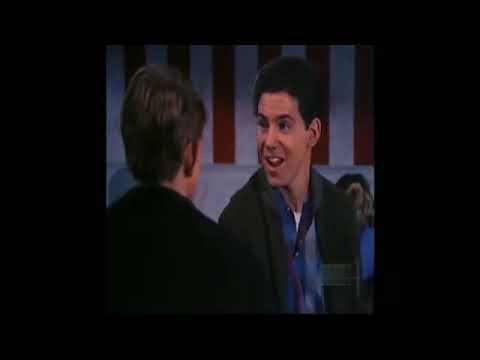A sitcom pilot has to be good enough and funny enough to convince studio executives that it could launch several seasons’ worth of laughs. But while some pilots hit the ground running (Arrested Development, Brooklyn Nine-Nine, Cheers), others sputter and lurch, requiring major changes before they find their footing.
Here are five sitcoms that evolved into something completely different from their pilots — thank god…
Seinfeld
The Seinfeld Chronicles served as the pilot for what eventually became known as Seinfeld, but it contained some notable differences from the hit show. The most glaring? No Elaine. There was no Kramer either, at least not technically. Michael Richards was there as Jerry’s neighbor, Kessler — the name change would come later without explanation. As for George? In the pilot, he’s also a comedian, even more closely mirroring his real-life doppelganger Larry David. The decaf-drinking Costanza and Jerry work on their respective comedy routines, a professional interchange that would be dropped when the show was picked up for good.
The Office
The Office’s changes weren’t as radical as Seinfeld’s, but one character had to undergo a major overhaul: Michael Scott. The pilot’s version featured Steve Carell with “his hair slicked back like a used-car salesman” and an unctuous managerial style that rubbed everyone the wrong way. What turned the character around was a Carell movie that came out between Season One and Season Two.
“They learned how to write for (Carell) from watching The 40-Year-Old Virgin,” says Kate (Meredith) Flannery in The Office: The Untold Story of the Greatest Sitcom of the 2000s. Writer Paul Feig points to the “Office Olympics” episode in Season Two in which Michael tears up during the national anthem. “I was like, ‘Oh, we can actually make Michael a nut, and overbearing, and ridiculous, and all these things, but we can find moments where he’s vulnerable and human.’”
Family Matters
The pilot idea was a working-class Cosby Show. And that’s what the show was for half a season or so — until neighbor Steve Urkel showed up. Jaleel White did a couple of cameos in Season One, became a full-time cast member in Season Two and then practically turned the sitcom into The Urkel Show, much to the displeasure of the other actors. “We weren’t happy about it,” Jo Marie Payton told E! True Hollywood Story. “It got to be a little resentful, but it was just an adjustment we had to make.”
M*A*S*H
The first season of M*A*S*H somehow had a laugh track over its goofy soldier antics set during the Korean War. But as the seasons progressed, it morphed from a comedy with dramatic elements to a drama with comedic undertones. The shift in tone is exemplified by that laugh track — standard sitcom laughs in Seasons One through Five, a more subdued undercurrent as the show went on and entirely gone by the final Season 11. “Our show was a film show — supposedly shot in the middle of Korea. So the question I always asked the network was, ‘Who are these laughing people? Where did they come from?’” wondered the show’s creator Larry Gelbart. “I always thought it cheapened the show.”
Happy Days
Happy Days is another example of a show that got Urkeled — minor character Fonzie took over to the point where the network wanted to change the show’s name to Fonzie’s Happy Days. (Henry Winkler wouldn’t hear of it.)
But that wasn’t the only change from the pilot. There was Richie’s older brother, the basketball-playing Chuck, soon to disappear without explanation. Potsie was originally conceived as Richie’s more sophisticated pal, but when Fonzie filled that purpose, Potsie became moronic comic relief. One more difference in the pilot: The show was filmed like a movie before it eventually shifted to “live studio audience” style, allowing the crowd to whoop every time Fonzie told someone to sit on it.

